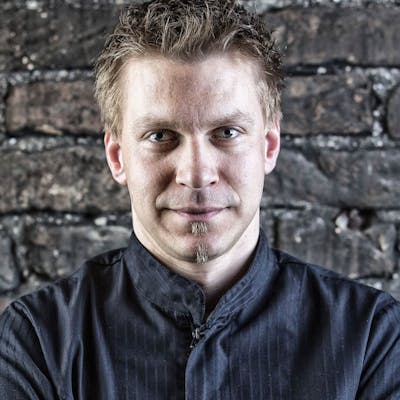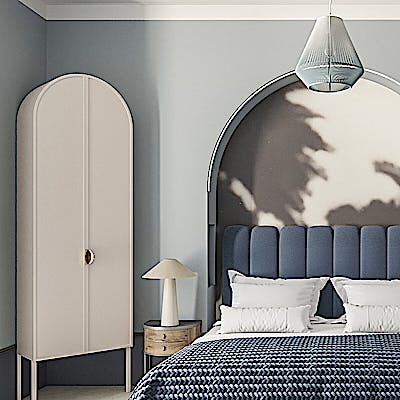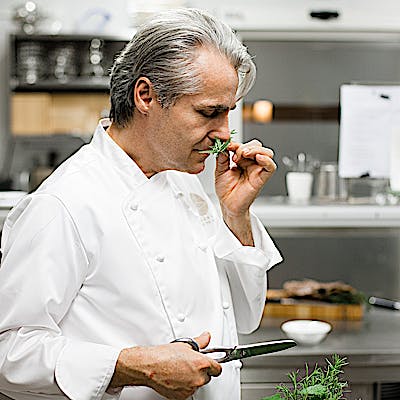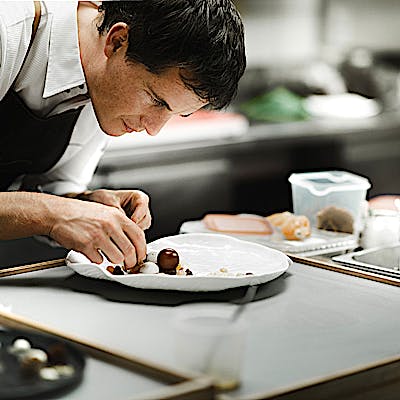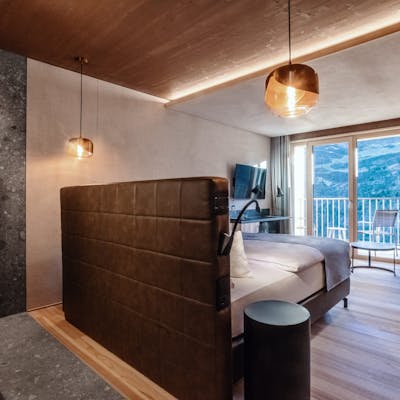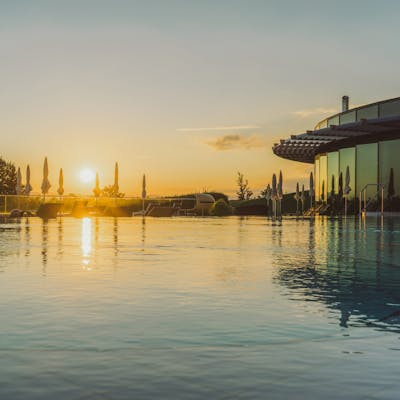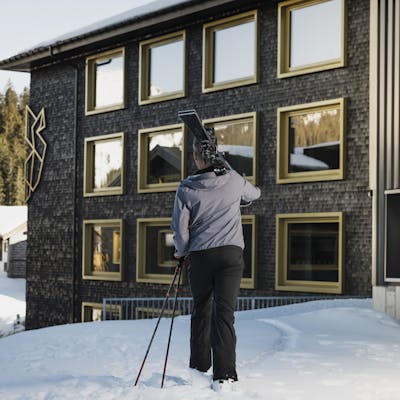
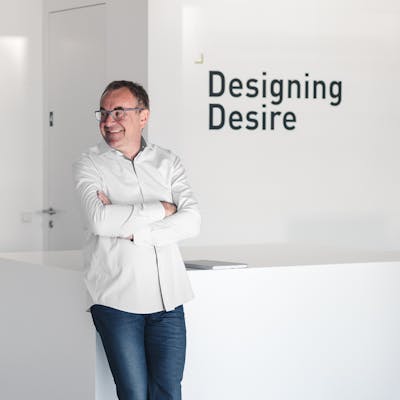

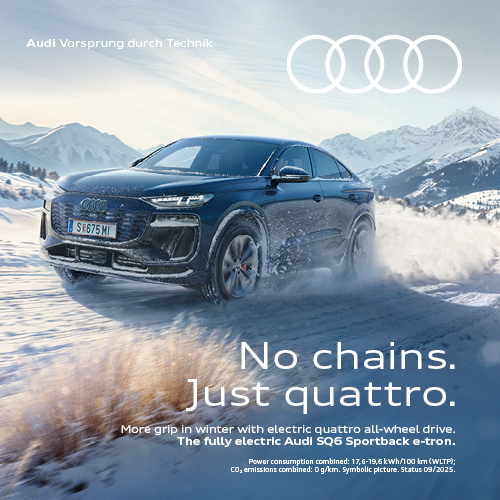
How does design have anything to do with acting? In his La Loupe interview Gerald Kiska had some interesting answers to this particular question. The idea behind “The Mozart” – a design hotel in Salzburg’s Andräviertel quarter – also is quite fascinating; it was two creative women who gave this place a whole new identity.
"When you don’t push your boundaries you can never reach a surprising effect.”
A little under 30 years ago Gerald Kiska went off to follow his passion for design on a professional level. In doing so, however, his aim was not to become the next freelance designer to pour his own handwriting over everything. His goal was to strengthen and position brands. And just how excellently he has been doing so is not just underlined by more than 100 international honours and awards. In his interview with La Loupe Gerald Kiska spoke about the necessity of testing boundaries, his occupational disease, what design and acting have in common, and much more.

L.L./ Your agency and design studio has been around since 1990. What is your approach to a new design, how can we envision this process? Maybe you’re a bit like an actor who adjusts to his new role?
G.K./ I’d say it really is a bit like acting. Meaning that the only routine thing about it is the location – the theatre – and that’s about it. Every single time the task is new and different. So, you can’t meet that with a routine process, quite the contrary – you need creativity.
L.L./ How long does such a process take?
G.K./ That would depend very much on the complexity. But usually a project takes between 12 and 60 months.

L.L./ Now, think keyword design and redesign – what do you need to keep in mind here?
G.K./ The process is different every single time. Generally speaking it all depends on what’s already there and how much you can question. And also if you might be able to question more than originally thought. We always try to create as much freedom as possible and not leave any space for routine. That may sound tough, but normally our clients come to us because they want to create new things and not because all they want to do is rummage around in the past. Of course, the past is important, a product’s history. It’s important to know where the customer comes from and where they stand today. Which is why not everything is feasible everywhere. You need to respect the personality of the brand you work for.

L.L./Just like with Gasteiner mineral water?
G.K./ Precisely. Water is an invisible product that’s hard to discern, even if every single water source is a little different. The goal is to generate as much trust as possible in the source. In Gastein the focus lies on spring water from the Alps – the alpine origin. And in the past the rock crystal was already used as a synonym for this brand. We went back to that idea. In former times industrial reproduction was paramount. Which means that the water was filled in round bottles. But we said, a crystal is never symmetrical. A crystal is asymmetrical. Which is how we ended up deep inside technology development.
“You have to respect the brand’s personality.”
One challenge was the pressed glass itself and the fact that an asymmetrical body of glass doesn’t cool down evenly. Which leads to tension in the glass. So, in the end it was a long road and a lot of trial and error (laughs). We tried to create as many natural crystaline shapes as possible while creating as few problems for production as possible. When making the models we coordinated with the glass production and haggled over every millimetre in order to reach a natural crystal-like feel while still keeping the costs manageable. This goes to show that even when it’s about a seemingly simple product like a glass bottle we test the boundaries because otherwise there can never be a surprising result.

L.L./ Mineral water is an everyday product. When did design make it into everyday life?
G.K./ Today it’s all about telling stories. And brands are a way of expressing stories. When is a brand a brand? When the term makes you think of a story. Design can support that process of writing stories, express it and make it transparent. The product itself is the best communicator of this story because it is what sticks with you the longest. Which also makes the product the best storyteller. And the more authentic the story, the better you’ll be able to remember it and the easier you’ll find it to decide on a brand.
“The product is the best storyteller.”

L.L./ Do you tell your customers about their brand, too?
G.K./ We look at what others think of the respective brand. In order to do so we started doing research 15 years ago and today we have a whole team that goes out and looks at the external image. Many companies have established a certain distance between themselves and their customers. And what we try to do, consciously, is to gradually come closer and ask what the actual perception of the company and the brand is like. That’s an extremely valuable factor for us when it comes to telling their story better.
L.L./ Would you say that nowadays design still is a luxury?
G.K./ Design is a battlefield that needs to be worked just as professionally as other factors that make up a brand. Meanwhile our range of services goes way beyond the products and has developed in the direction of communication. For most of our clients we do communication, too. Because who could speak about a product better than the person who designed it?
L.L./ Do you sometimes feel like you need to explain your designs to your clients?
G.K./ (laughs) Speaking in Voltaire’s words (more or less): “If it needs an explanation, it’s not worth explaining.”

L.L./ Design as an aid: what’s your approach to this topic?
G.K./ We wanted to lend aids like prostheses a discernible value and make their wearers proud in the process. It’s a very sensitive business. What makes us proud varies very much, depending on our individual perception. Since a prosthesis is something you wear instead of a limb and not just on your body, the feeling is very different from that of a piece of clothing, for example. So you really need to offer an option that actually meets the personal needs. You can’t just go for the one-size-fits-all approach. We have developed a construction kit where everyone can design their own prosthesis that matches their own values. That makes it easier to accept for the wearer und strengthens their self confidence because they themselves were in charge of design and they had an influence on how visible it will be towards the outside world.
“Salzburg as a brand is authentic.”

L.L./ How would you describe Salzburg’s design language?
G.K./ I’d say that Salzburg as a brand is authentic. And anything but modern. But it doesn’t have to be. Salzburg sells through something other than modernity and I think that it’s believable that way.
L.L./ How “designed” is your life?
G.K./ Well, you can’t really escape your own profession. Everything I buy for myself I look at with a designer’s eye – that’s an occupational disease you can never really cure. In that sense I am, of course, a little more picky about the things I surround myself with. I prefer having less but the right kind rather than more of the wrong kind (laugs). Yes, it’s an occupational disease. I can’t just buy some random chair, I just can’t (laughs).

WORDRAP
I can’t do without …. at work.
The exchange of ideas with my colleagues.
Form follows function?
That was already dead when I was in uni.
What can not be transported via design?
I’d say you can transport just about anything through design.
...could use a new design.
There is a long list.
...is perfect for me!
My occupational disease: next to nothing.
Gerald Kiska’s career started in 1990 as a one-man-show. Today the eponymous design studio in Anif near Salzburg has 230 members of staff from 35 different countries. That makes KISKA one of the largest studios in Europe that’s still led my its owner. The company’s product portfolio comprises product and brand design & product communication as well as strategic consultation. Among the things that made Gerald Kiska famous was his work for the motorcycle manufacturer KTM for whom he designed the famous orange colour and much more.



 Add to Favourites
Add to Favourites




